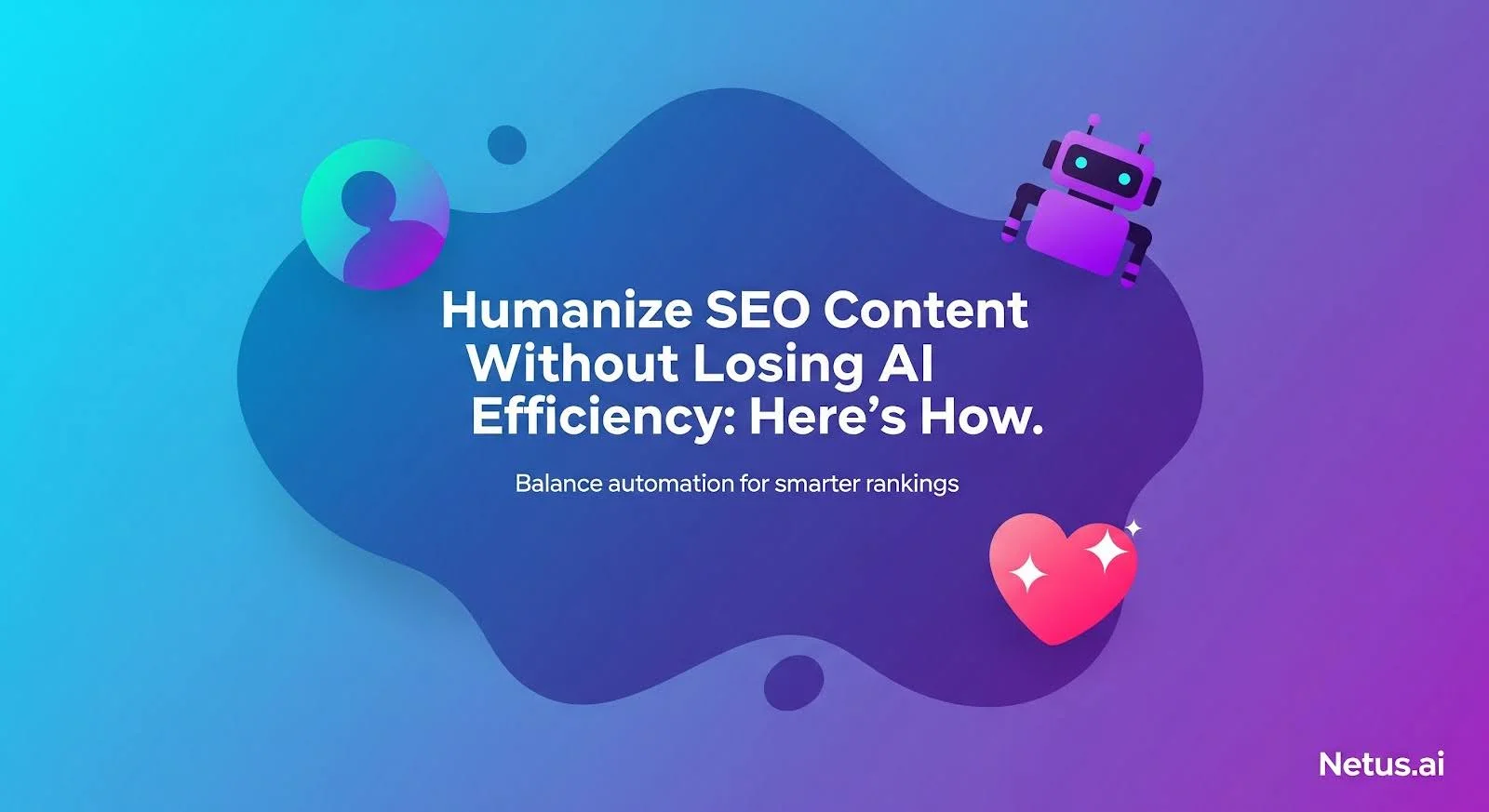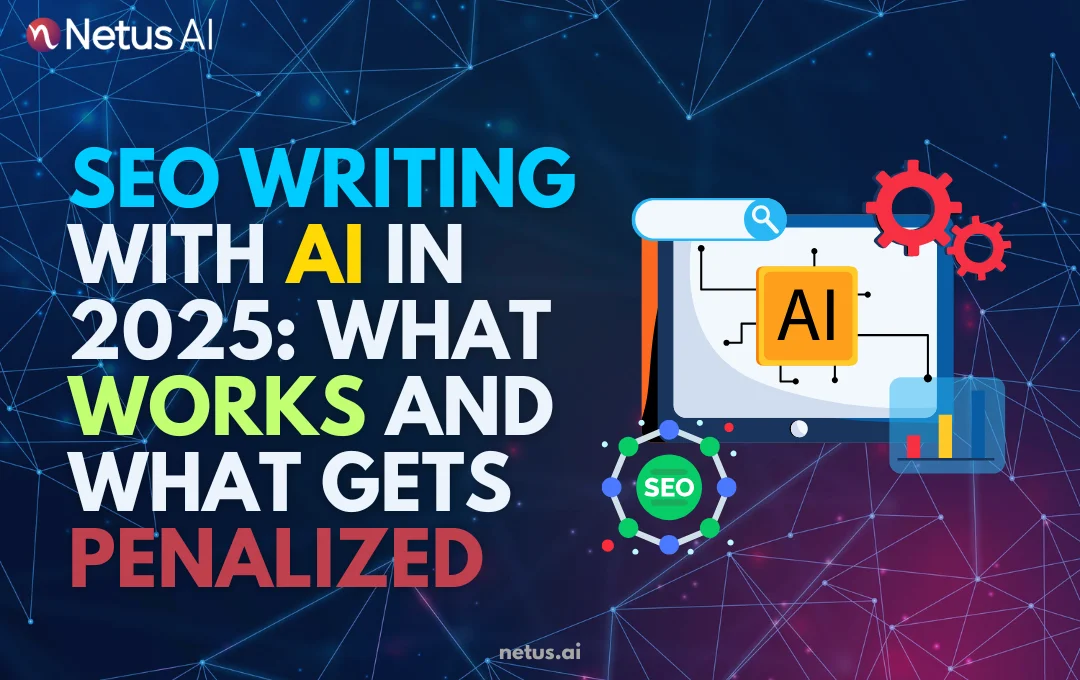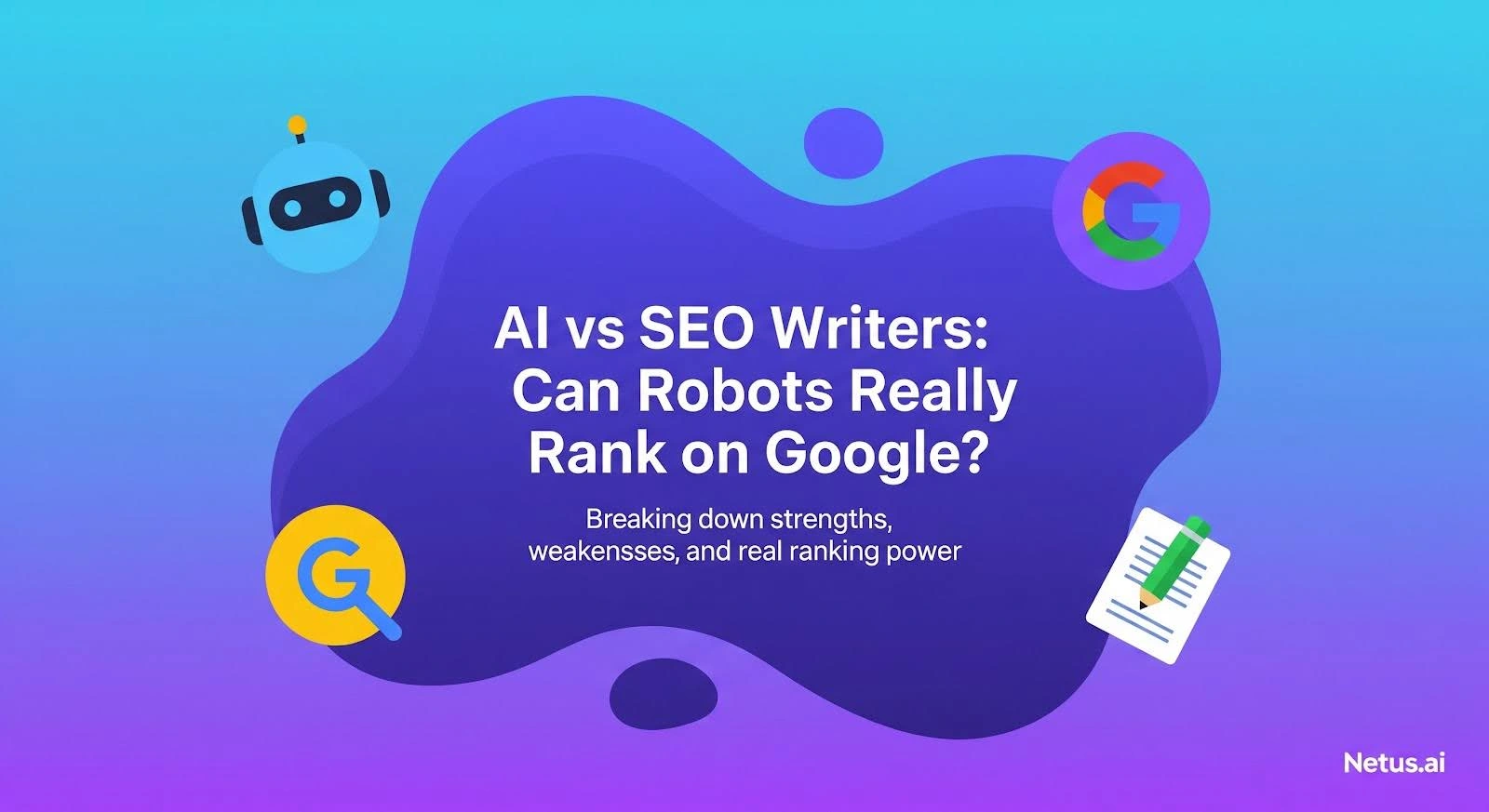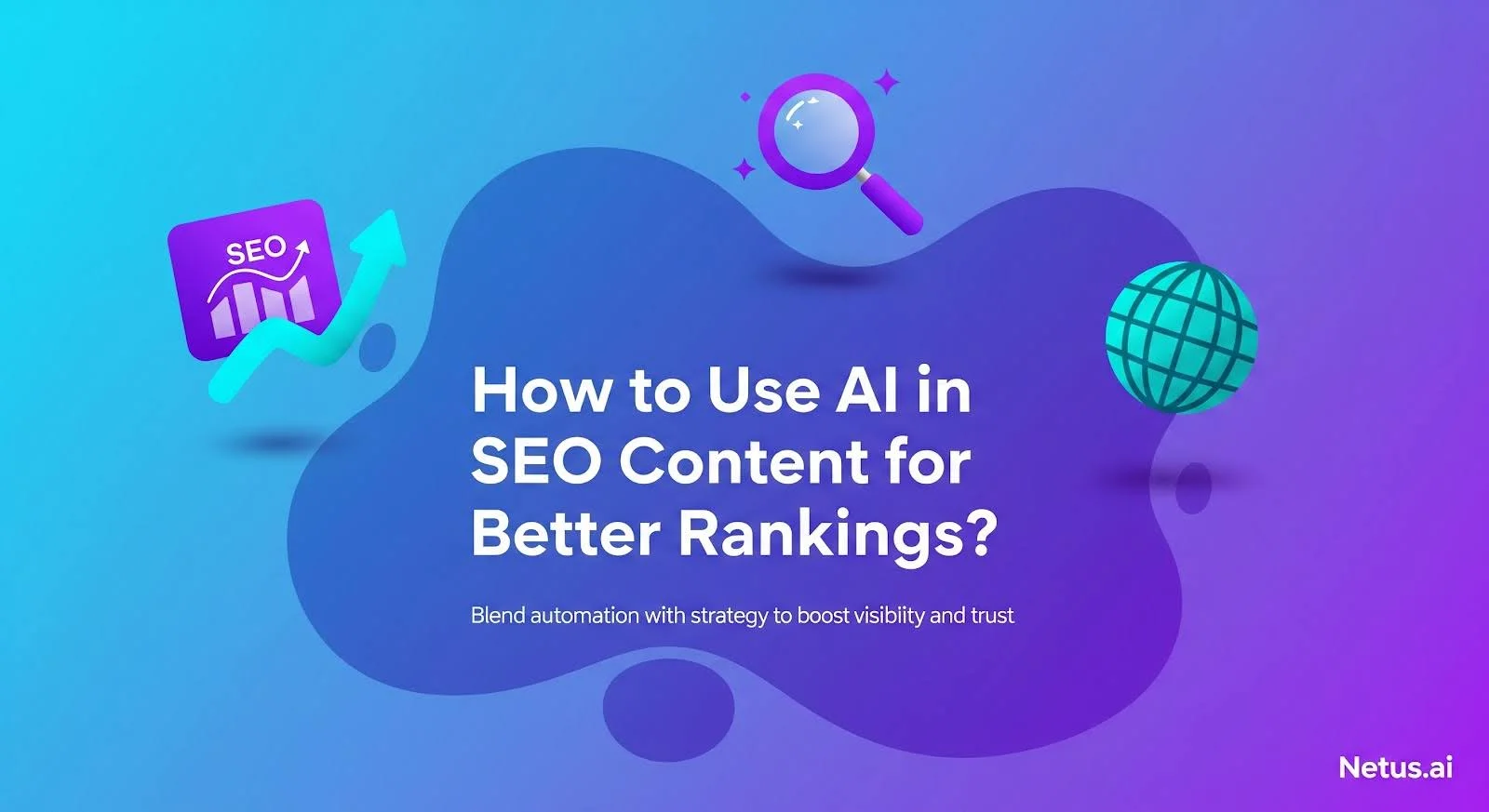SEO content creation has drastically changed because of AI writing tools, offering unprecedented speed and scale.
Yet, a critical challenge emerges: Google’s relentless pursuit of truly helpful, human-centric content. To resonate with both users and search engine algorithms, it’s essential to humanize AI content for SEO.
Raw AI output, even meticulously optimized for keywords, increasingly falls flat. It gets flagged by detectors, struggles with E-E-A-T and fails to engage real people, leading to poor rankings and missed opportunities.
Decoding "Humanized SEO Content": Beyond Keywords & Robots
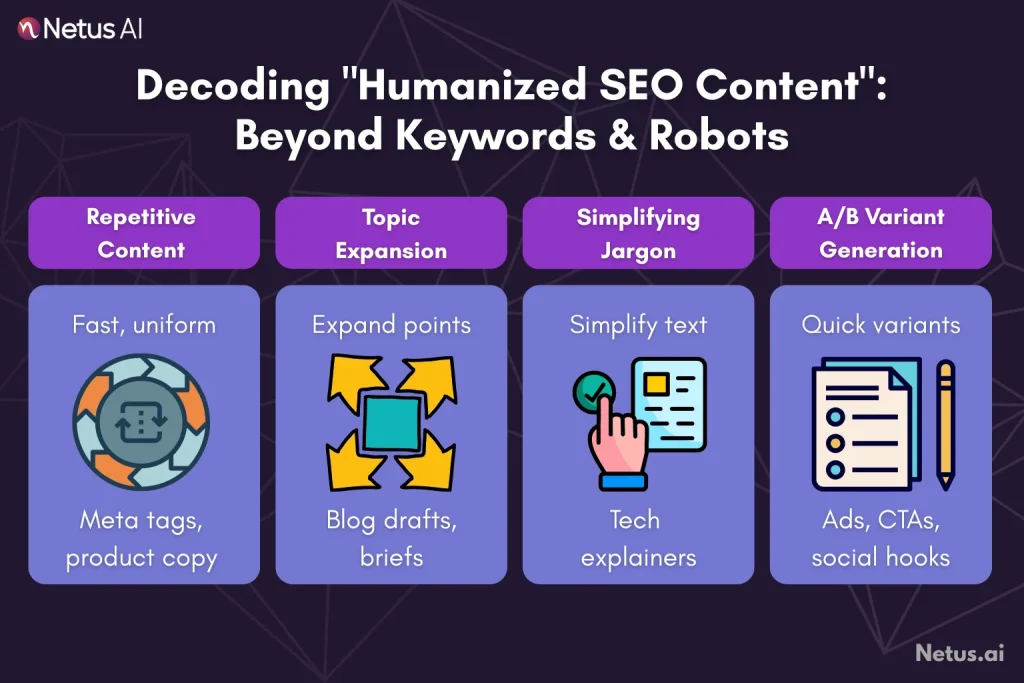
So, what exactly does “humanize AI content for SEO.” mean in practice?
- Authentic tone & voice: It sounds natural, not like a textbook or marketing material. It has a consistent, brand-appropriate personality (conversational, authoritative, witty or empathetic) and avoids the unnatural tone often found in raw AI content.
- Natural rhythm & variation (Burstiness): Human writing has a musicality. AI-generated content often lacks a dynamic and engaging flow. This can be addressed by incorporating a variety of sentence and paragraph lengths, as well as diverse sentence structures.
- Semantic depth & nuance: It goes beyond basic definitions, revealing a deep understanding of the topic’s complexities and context. It anticipates and addresses user queries, even unstated ones.
- Original perspective & insight: AI creates but humanized AI content adds unique value through original analogies, personal anecdotes, novel ideas or experience-based opinions.
- Built for E-E-A-T: It proactively signals expertise through precise terminology, accurate details and confident explanations. It builds authoritativeness by citing credible sources (when needed) and demonstrating comprehensive coverage.
- Conversational flow & readability: The content flows naturally with a logical structure, prioritizing reader benefit over keyword stuffing. It avoids excessive jargon or explains it clearly, feeling like a helpful guide rather than a dictionary.
Humanized content avoids these robotic hallmarks
- Overly Formulaic Structure: Every paragraph is exactly 3-4 sentences, rigid H2/H3 patterns without logical narrative flow, repetitive intro/conclusion formats.
- Predictable Phrasing & “Thesaurus Overload”: Using overly complex synonyms awkwardly, relying on clichéd AI phrases or unnatural combinations.
- Lack of Depth & “Content Padding”: Repetitive, obvious and lacking practical application or deeper analysis.
- Emotional Vacuum: Content that feels sterile, devoid of any empathy, enthusiasm or understanding of the reader’s potential frustrations or aspirations related to the topic.
- Generic & Forgettable: Generic content lacks unique angles, specific examples or brand personality.
The Humanization Process: Rewriting for Rhythm, Burstiness & Depth
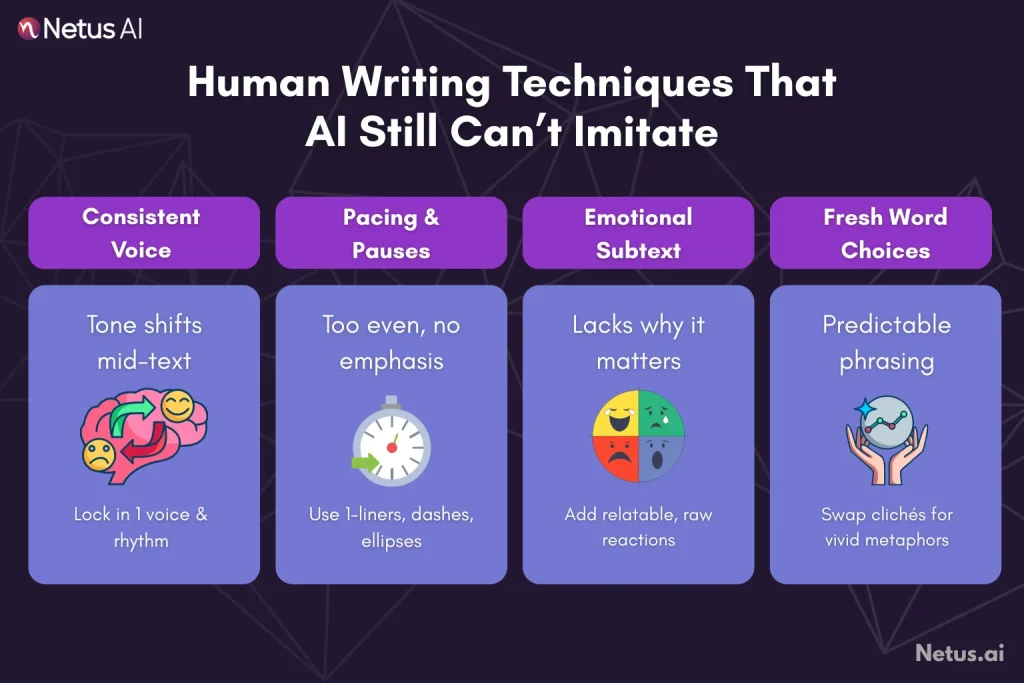
This is where the magic happens. Humanizing AI content for SEO isn’t about starting from scratch; it’s about strategic editing focused on key human qualities.
a) Mastering Rhythm & Flow (Combating Monotony)
- Vary Sentence Length Ruthlessly: Improve readability by varying sentence length. Break long AI sentences and combine short, choppy ones for a natural flow.
- AI Output: AI content creation increases efficiency and scalability, allowing marketers to produce more material faster. This is crucial for consistent publishing and a competitive edge.
- Humanized: AI enhances content creation efficiency, allowing marketers to produce more content faster, which is vital for consistent publishing in a competitive digital environment.
- Vary Sentence Structure: Avoid repetitive sentence beginnings and varying sentence structures.
- Read Aloud (Seriously!): Your ear is the best detector of unnatural rhythm. Does it trip you up? Sound monotonous? Feel awkward? If it doesn’t flow smoothly when spoken, rewrite it.
- Use Transitional Phrases Naturally: Use transitional words (e.g., However, Therefore, For instance) to improve text flow and readability.
b) Injecting Burstiness & Organic Texture
- Embrace Fragments (Strategically): Used sparingly and for impact, sentence fragments can mimic natural speech patterns and add punch. “The result? Higher rankings.” “Absolutely crucial.” “Think about it.”
- Use Contractions: “Don’t”, “can’t”, “it’s”, “we’re”, these instantly make text feel more conversational and less stiff than their formal counterparts.
- Incorporate Rhetorical Questions: “But what does this actually mean for your business?” “Ever felt overwhelmed by content deadlines?” This engages the reader directly.
- Strategic Em Dash & Parentheses: Use em dashes ( , ) for emphasis or abrupt shifts in thought. Use parentheses for asides or minor clarifications, these mimic the cadence of human thought.
- AI Output: “Optimizing for featured snippets requires concise answers structured effectively.”
- Humanized: “Snagging that coveted featured snippet spot? Concise answers (under 50 words) and a bulletproof structure (clear headings, scannable lists) are key.
- Vary Paragraph Length: Don’t fear short paragraphs (even 1-2 sentences) for emphasis. Break up intimidating walls of text. Longer paragraphs are fine for deep dives but ensure they have internal rhythm.
c) Adding Topical Depth, Nuance & Originality
- Ask “So What?” and “How?” Relentlessly: AI often states facts. Humans explain implications and applications. For every key point the AI makes, push further.
- AI output: “Social media engagement is important for brands.”
- Humanized: AI-assisted social media engagement builds trust, acts as digital word-of-mouth and signals algorithmic relevance.
- Incorporate specific examples & data: Use concrete examples and recent, credible statistics instead of generic statements.
- Introduce counterarguments or limitations: Blend AI drafting with human oversight for E-E-A-T-compliant, non-generic content.
- Weave in analogies & metaphors: Raw AI content is like a house with pre-fabricated walls but no plumbing or wiring. While it may appear acceptable, it fails to be functional or inviting. This makes complex ideas relatable.
- Inject experience (real or curated): This is gold for E-E-A-T. “In our experience managing SaaS content campaigns, we’ve found that” or “Common pitfalls we see include”.
- Define jargon in context: When using technical terms, briefly explain them for your audience. For example, prioritize “topical authority”, Google’s measure of comprehensive subject coverage, over individual keywords.
- Prioritize reader intent: Prioritize reader intent: tailor content depth and examples to their goals.
d) Editing Paragraphs Like a Human (Not a Machine)
- Check the “Topic Thread”: Does every sentence in the paragraph clearly relate to and support the core topic sentence? Eliminate tangents or redundant points.
- Ensure Logical Flow: Does each sentence naturally lead to the next? Does the paragraph build an argument or explanation step-by-step? Rearrange sentences if needed for better logic.
- Strong Opening Hook: Does the first sentence grab attention or clearly state the paragraph’s purpose? Avoid weak openings.
- Powerful Closing Sentence: does the last sentence summarize, transition or leave a strong impression? avoid trailing off.
- Scannability: Would adding a bulleted list or numbered steps make complex information clearer? Use subheadings (H3, H4) within long sections if appropriate.
SEO-Safe Content Starts at Generation: NetusAI’s SEO Article Writer
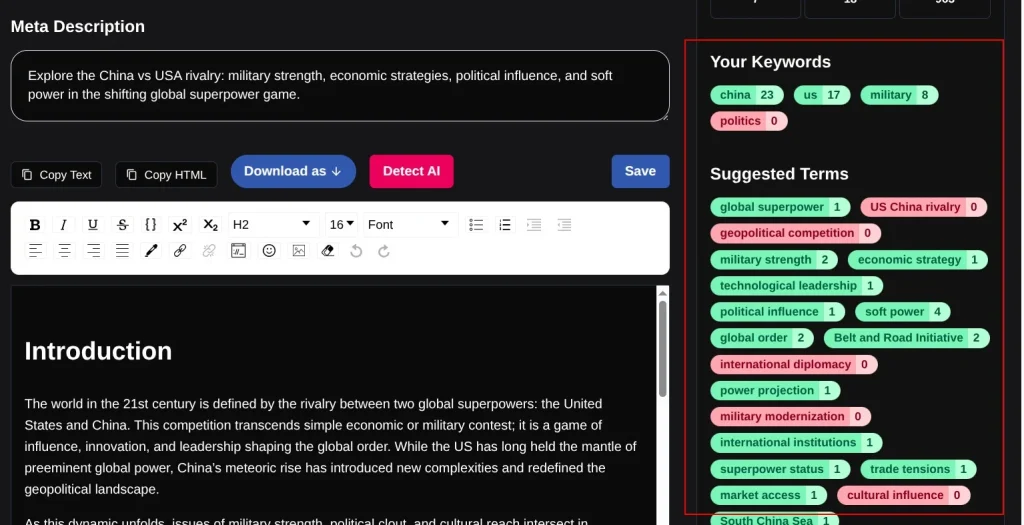
Avoiding stylometry and detection issues shouldn’t begin after content is written, it should start with the writing itself. That’s where NetusAI steps in.
NetusAI SEO Article Generator produces optimized, full-length blog posts, unlike generic AI tools that create robotic content. Unlike generic tools, it goes beyond simple drafting. It:
- Lets you input headlines and targeted SEO keywords
- Supports long-form templates for full blogs
- Auto-generates a structure with Title → Outline → Content
- Works in multiple languages for global teams
It integrates with the Netus AI Bypasser + Detector, ensuring your output is undetectable.
Generate, review and rewrite AI content for human-like quality, ideal for marketers, freelancers and bloggers.
Netus’s content generator creates full SEO articles efficiently, saving time and rewrites without compromising trust or quality.
Final Thoughts
Bypassing AI detection means writing naturally, uniquely and with strong structure.
Surface-level paraphrasing will only carry you so far. Robotic, repetitive or predictable AI-generated content will be flagged.
To humanize AI SEO content, rewrite it to restructure sentences, inject your voice and remove AI patterns. Tools like NetusAI can assist. Focus on clarity, varied structure, early detection tests and purposeful rewriting beyond just synonyms.
Because if your writing feels human, sounds human and reads human, the detectors won’t stand a chance.
FAQs
No. Simple synonym replacement often keeps sentence structure intact. AI detectors flag this quickly due to unchanged patterns in burstiness and perplexity.
Stylometry analyzes writing style, things like average sentence length, rhythm and punctuation use. AI-generated text tends to have robotic stylometric traces. Detectors use this to catch even paraphrased content.
NetusAI’s Paraphraser rewrites deeply to alter structure, tone and flow, reducing AI flags while keeping the original meaning.
To create effective AI SEO content, integrate your unique voice, perspectives, research and audience understanding.
Google’s algorithms prioritize helpful, reliable and human-centric content. AI-generated content, if not properly humanized, can often lack the depth, originality and emotional resonance that Google seeks.
Humanizing AI content boosts E-E-A-T (Experience, Expertise, Authoritativeness and Trustworthiness) through unique perspectives, credible sources and a clear authorial voice. This makes the content more trustworthy and authoritative.

